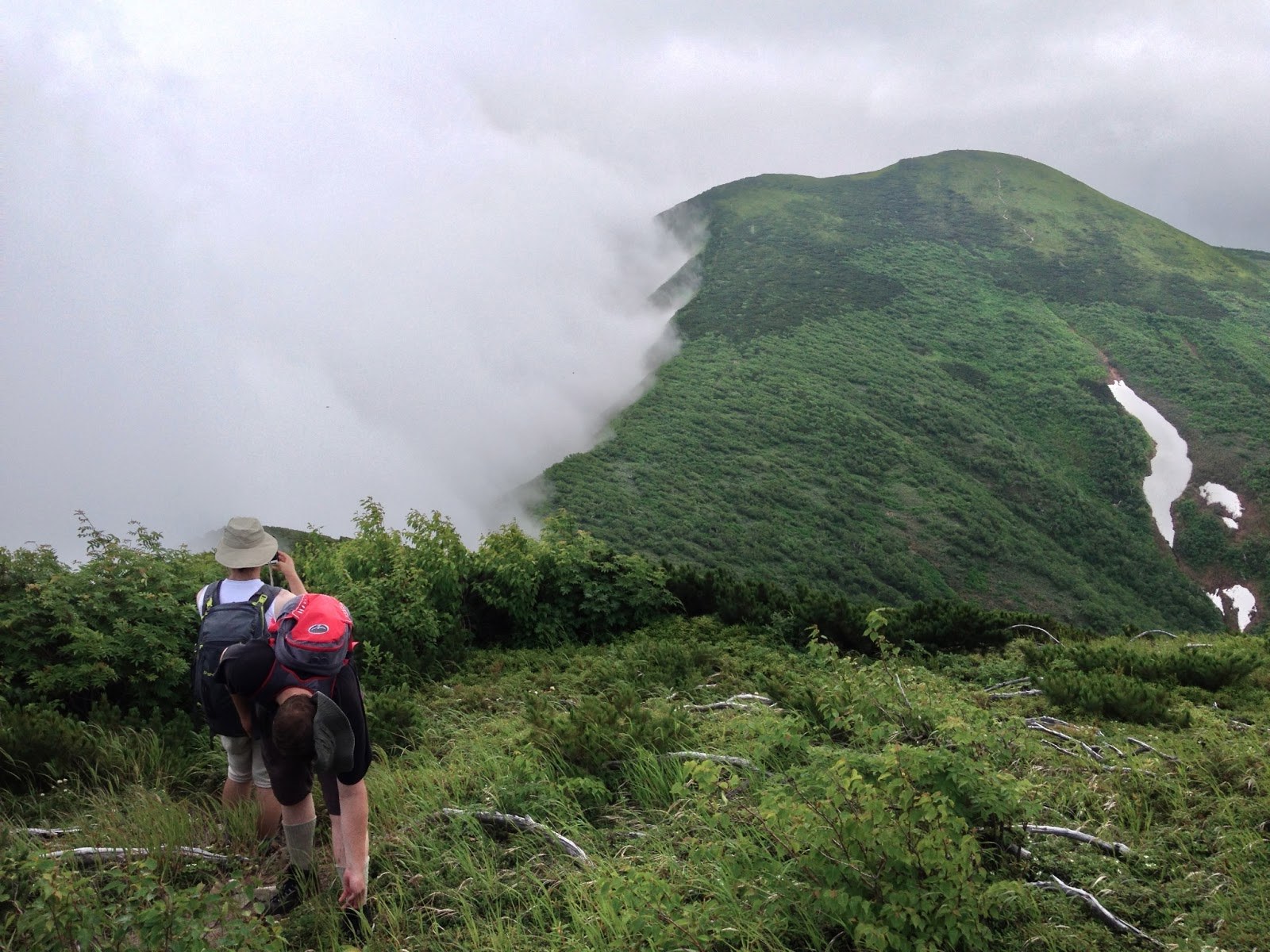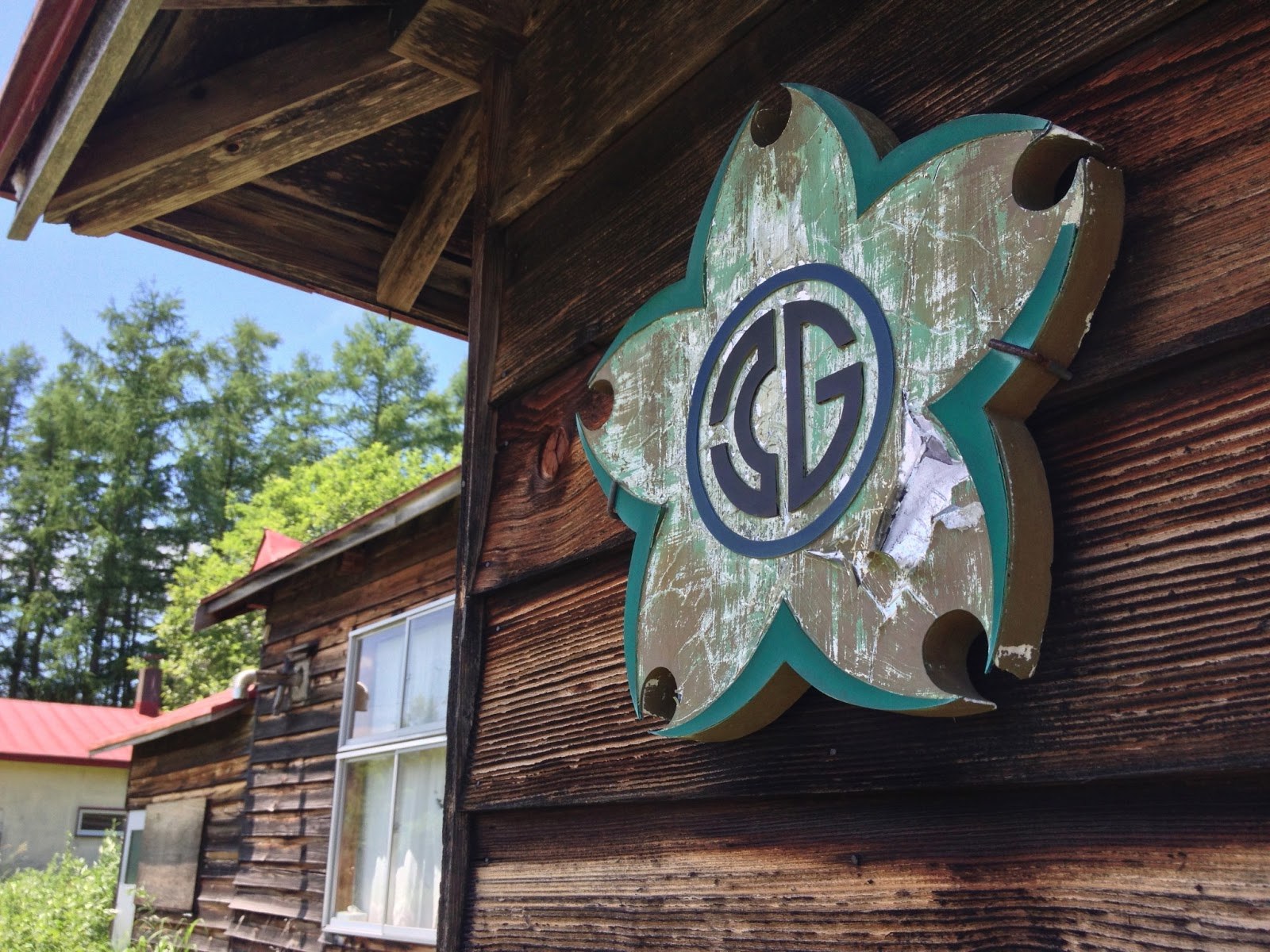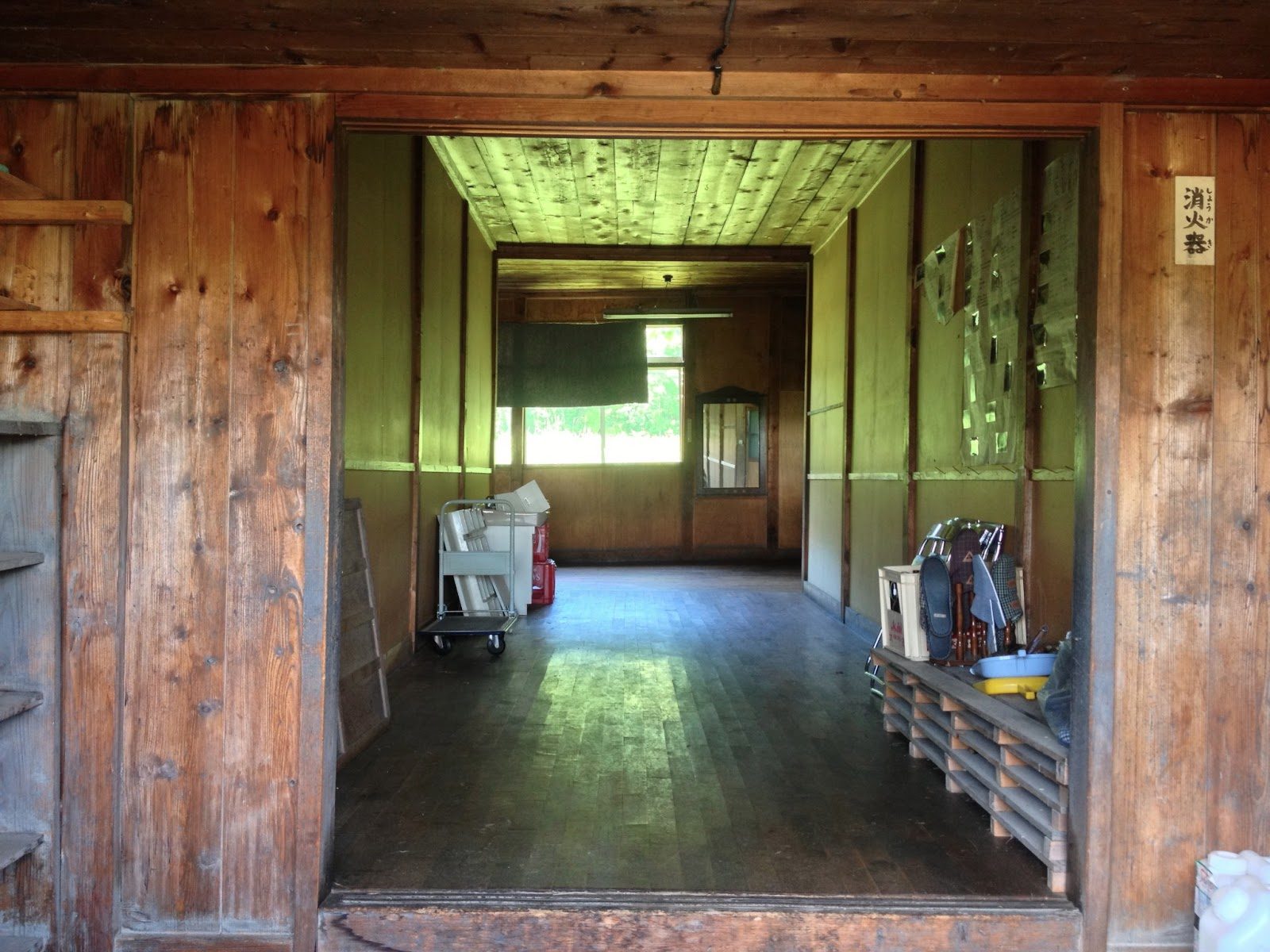Week 49
When a person wants to climb a mountain, there are few things that can stop that person. Not among the list is a pitch-dark gravel road 20 km deep into Teshio-dake Prefectural Park, which is why in the very late hours of Sunday night, Oliver and Tony and I find ourselves on a pitch-dark gravel road 20 km deep into Teshio-dake Prefectural Park. Ahead, somewhere in that inky outside, lies the vast triple-peaked hulk of Teshio-dake. This is where we're going.
Anyone who's traveled around Hokkaido by this point knows that mountains come in two types. The first is the mountain as drawn by a first grader, as a tall solitary mass heaved up from the earth around it. Mountains like Shari in the northeast, or Yotei in the southwest. They look monolithic, and heavy, and tall and imposing and challenging and they make for terrific photo ops. Japanese people always seem to christen them '-fuji' (as in Yotei is Ezo-fuji and Shari is sometimes Okhotsk-fuji and Rishiri is Rishiri-fuji, which leads to some impressive nomenclatural acrobatics when it comes to the town there, Rishiri-fuji-cho). But this type of mountain lacks the certain un-put-your-finger-on-able brutal strength and mass of the other type, which consists of a non-prominent peak shouldered up against slightly lower peaks, which is what you get mainly in the Daisetsuzan & environs. These are mountains that you see coming from a long way away, that advance on you over the course of hundreds of kilometers, which reach out arms and pull you in among them, through passes and far wrinkled vistas and violently churned seas of green. These are mountains the weight and height of which you feel, mountains evoking inside you proof of sensory experience beyond the traditional five -- which is how as the minutes of July 14 wind down into nothing, and as we rattle down that little gravel road through impenetrable darkness on three sides, we know that we're in the right place, as if feeling the gravity of all that matter around and above us, our own matter pulling towards it.
We sleep in the car, in a wide gravel parking lot, flanked by the cars of some other hikers and sitting at the bottom of a great natural bowl. The birds wake early and we with them. We move through the soggy gray as more experienced elderly materialize out of nowhere and strap on gators over tall boots and pull Patagonia polarfleeces over their balding heads. They set out up the mountain while we struggle against sleep. The air is a little stale and very wet, cold but warming quickly. The sun hasn't actually climbed high enough to pour into the bowl yet, so we're relying mostly on a lot of reflected light from the western ridge, which for some reason is almost totally bare of trees. There's a river off to the left somewhere but inspection yields nothing visible. There are more bugs than I think I have ever seen in one place, here. Their collective mass is probably greater than ours is.
The start of the climb is heavy with foliage and dew, punctuated with fears of bears which we have been assured by signage and Wikipedia exist, and hunger desperately for our flesh. The climb is slow because we have to navigate a probably statistically significant number of fallen trees, and we have to stop every maybe twenty minutes to pick ticks off of our legs and necks and shoulders. They're easier to get off than I thought they were -- although my only real up-close-&-personal experience with ticks was when my brother got one and was brought to the hospital for removal on an Easter Sunday morning say a decade ago. He got a frankly comedic amount of chocolate for his trouble; this Monday morning I get more ticks. The real horror comes, anyway, after we've left behind the thick underbrush for the typical Hokkaido alpine pine scrub and we take a short break to remove some clothing for a more thorough inspection. Without going into graphic detail the best way to put it is that ticks seem to like crawling into pants.
But and so anyway we continue the climb past the low, flat Maruyama, which doesn't appear on a lot of maps but counts as one of the peaks nevertheless. In real life this Maruyama looks like a big geologic bubble; on contour maps it looks like this uncannily accurate bullseye. We pass a number of cairns and drop stones on top of them, fighting through exhaustion to get them to balance just right. Further up we cut through a field of that low spongey brush, that webbed flower stuff that seems to sit on top of all mountains, which when you step on it it gives more than you think it ought to, but less than would make it uncomfortable to walk on, and in fact is actually pretty gentle on your ankles in a Dr. Scholls kind of way. The peak of the mountain is loose, sharp felsic rock that tumbles and jostles when you step on it, and when two pieces come together just right it sounds weirdly like pouring charcoal into a grill, clicking and clacking in the manner of any easily cleavable material. It satisfies a deep aurally hungry part of me, hearing these rocks grind against each other, but coupled as this satisfaction is with the threat of a rockslide, I climb as lightly as I can and settle for dropping rocks against each other at the peak, which in retrospect was probably a little annoying to the elderly people eating lunch there.

The climb back down is a little easier, crossing over the the opposite Maeteshio peak -- craggy and Lord-of-the-Rings-ey and dangerously narrow, the whole effect of which is augmented by a thick battalion of clouds spilling every now and again over the ridge, like a precarious bowl full of milk or something. From Maeteshio we drop nearly straight down into the valley of the Teshio River, which we follow back out to the parking lot. I don't remember much of the drive home, but I recall spending simply egregious amounts of currency on convenience store food including (but not limited to) soggy curly fries, pumpkin chips, and enormously overprocessed sandwiches filled with chocolate frosting.
I fall asleep that night pretty easily, but in the brief addled minutes between the light going off and the total surrender of consciousness it's almost as though I can feel this far-off tugging again, maybe manufactured by my sleepy brain and maybe impressed upon it and maybe like I don't know some sort of Shintoistic reach-down: this calling back out to the mountains, out my door and in Penelope and down the long straight road of Yubetsu and back towards the high-altitude adventure of this Hokkaido summer. But then I'm asleep and totally gone, and I don't dream at all.
P. S. On the off chance that someone has stumbled upon this looking for, y'know, usable information about the hike: most of the hiking literature indicates that it's a 6-hour, 14.5-kilometer round trip; we took it pretty leisurely over the course of 8 hours. There are three courses to the summit: a New Course, which the first half is like tremendously crowded with plant & insect life, and the second half is all pine scrub and pretty flat. About two-thirds of the way up here there's a cabin, for if you wanna make it a two-day trip (which is unnecessary, but maybe, romance? stars?): an A-frame with some parquet and a shovel and some toilets that we didn't have the courage to inspect. Then there's the Maeteshio Course, which the first half is almost entirely flat and the second half, up to Maeteshio, is quite steep and consists mostly of a narrow lane of loose rocks. There's a shallow saddle across to Teshio proper. From what we gathered most people take the Maeteshio Course up and the New Course down; we did the opposite.
The last is the Historic Course, which follows the river up into a deep valley, not much of a challenge there, with a dangerously steep climb up a ravine on the face of the mountain. We climbed in mid-July and there was still a good deal of snow & ice on the steepest part of the climb, from what we saw. You can see the top of the Historic Course on that picture above, actually, over on the right. The consensus is that you have to be a strong hiker for this one, so it's kinda an 'at your own risk' thing.

P. P. S. We also found this school that was built (not on Teshio; in Monbetsu) after a forest fire destroyed the previous one, in 1942. So that's like a touchstone: if you find any buildings that look more or less like this, they're from 1940s Hokkaido, which wouldn't that be a great setting for a Guillermo del Toro movie?


